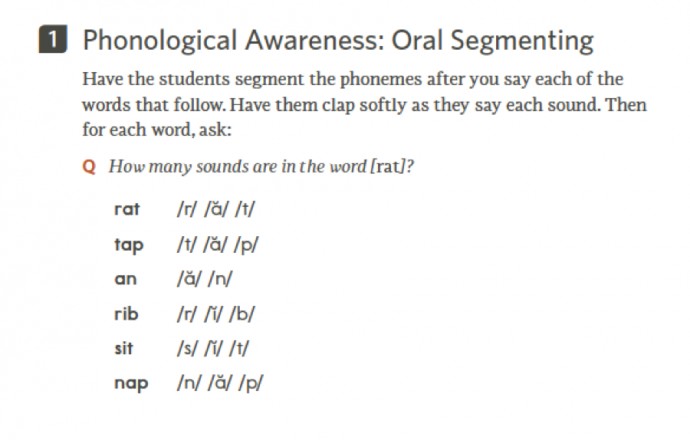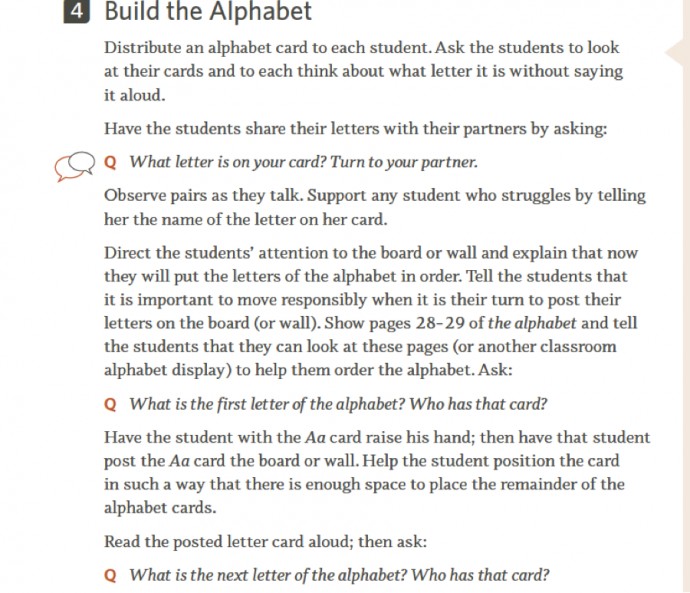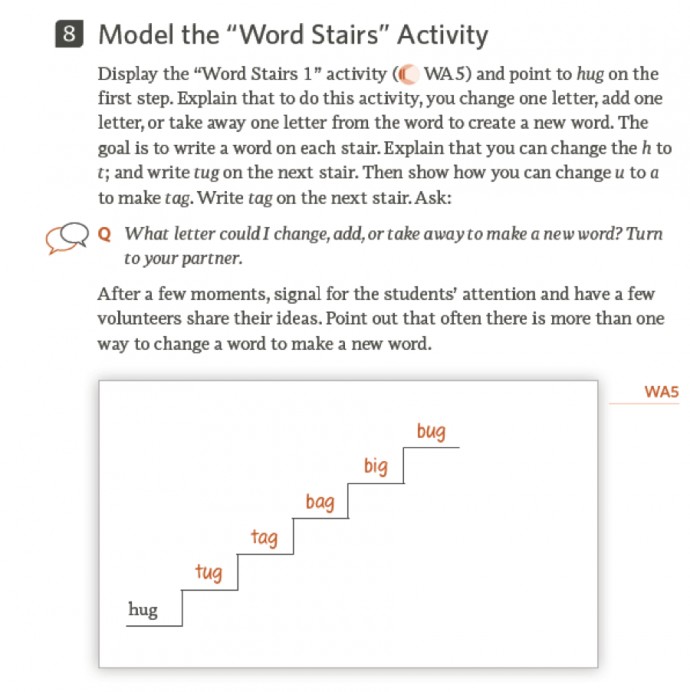In our last installment, we discussed the first recommendation made by the IES/WWC in their latest practice guide. The second recommendation discusses explicit teaching to develop awareness of the segments of sound in speech and how they link to letters. The evidence is strong that both decoding and encoding rely on students’ ability to:
- Identify the individual sounds or phonemes that make up the words they hear in speech
- Name the letters of the alphabet as they appear in print
- Identify each letter’s corresponding sound(s)
While these foci are not new to teachers of our youngest readers, the practice guide provides us with some recommendations as to how we can ensure that our students have these most basic understandings.
First, we must teach our students to recognize and manipulate segments of sounds orally. Consider the following instructional routines from Being a Reader:

Another important consideration from the second recommendation is to name the letters of the alphabet as they appear in print. While letter naming has been a long-standing staple of early literacy instruction, the panel recommends building letter knowledge by reinforcing known letters and introducing new ones.
Letter naming routines are introduced and supported in Being a Reader. Students have the opportunity to explore letter names in the context of various alphabet books (i.e. Chicka Chicka Boom Boom and The Alphabet) and then work on identifying the letters in their classmates’ names. In addition, students who need more support in acquiring letter names have the opportunity to work in small groups to solidify this skill.


The last step in supporting students’ alphabet awareness is linking their awareness of the sounds with their knowledge of letter-sound relationships. This work allows students to begin decoding and encoding words. Word building exercises that begin with CVC words and move into more complex patterns allow students to make the connections between what they say and what they can read and spell.

Each of the instructional strategies from this recommendation support students in their awareness of sounds in speech and how they link to letters. The next recommendation helps teachers think about how to teach students to decode words, analyze word parts and write and recognize words. Please join us on November 15 for a webinar to discuss these important considerations for our youngest readers.
